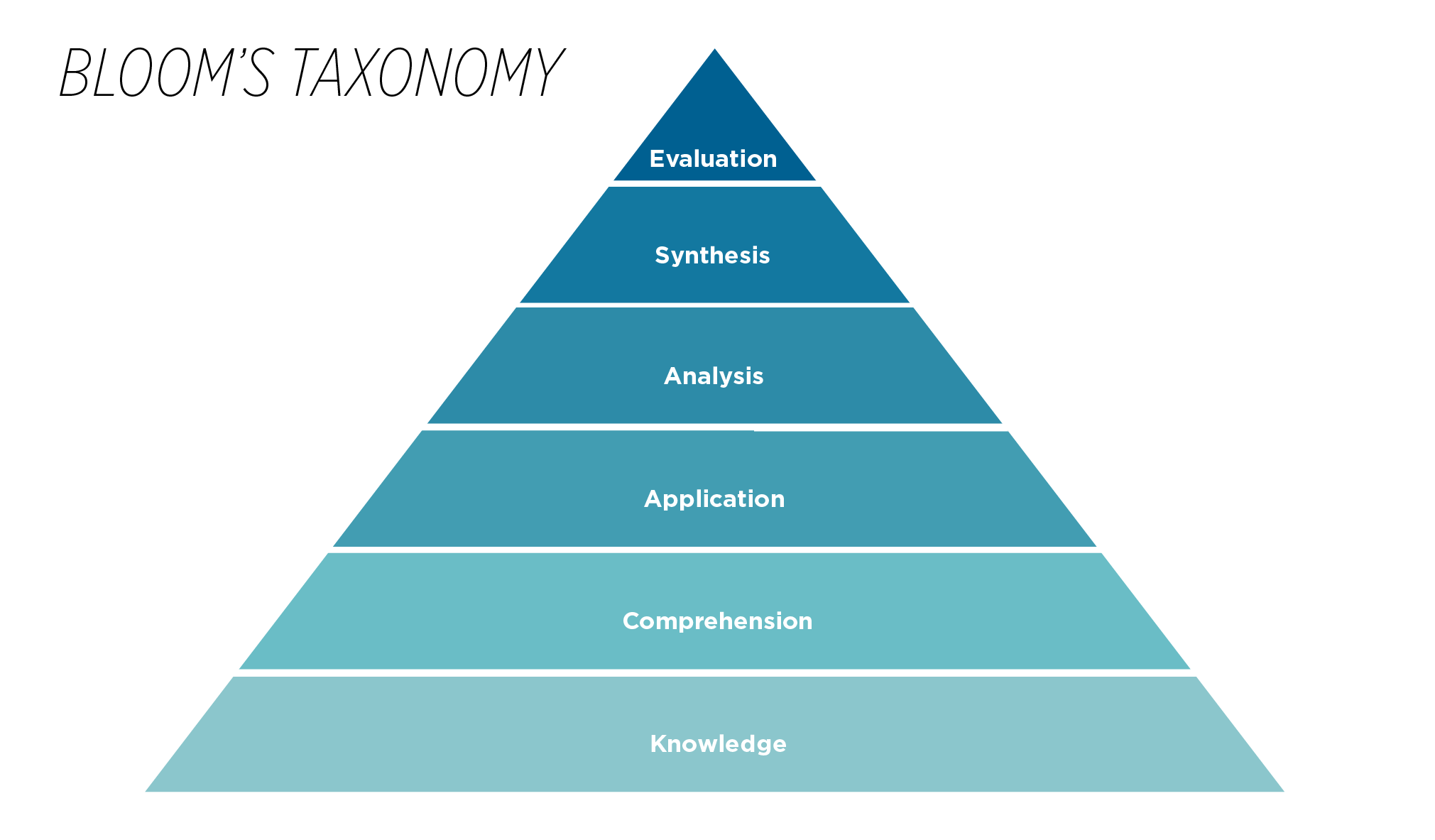Benjamin Bloom provided the corporate learning space with two key concepts. The first is Bloom’s taxonomy. The second, Bloom’s 2 Sigma Problem, resulted from a series of studies in the 1980s to see which types of learning resulted in the best performance. We can use both to improve learning experiences.
Bloom’s Taxonomy
Bloom’s taxonomy is a hierarchical model that classifies learning objectives by their complexity and specificity:

As you think about these levels of knowledge from a job-specific point of reference, you’ll see that some jobs will require less robust exposures to certain topics. In other cases, you’ll want to go into more depth. You may want to use different delivery methods to train on each topic, from podcasts, videos and books, to e-learning and webinars, to hands-on workshops and coaching. For example, it might be difficult to teach a web developer the details of a technical product using just a podcast. However, if you’re teaching a salesperson, who only needs a cursory overview of the product’s features and benefits, a podcast or video might be an effective alternative.
To use this framework, start by defining four levels of knowledge for each individual learning path – for example, orientation, understanding, skilled and expert. Next, categorize all of the topics in each job role’s learning path into those four levels. Once you know the depth that you have to train the person in each of these topics, you can decide the most effective way to train to that level of knowledge. This process will usually dictate the delivery method that’s most appropriate for that person’s job role. If someone needs only a cursory knowledge of the topic, for example, a two-week workshop would be inefficient, and a short video might be better.
This taxonomy approach moves away from the “one-size fits all” method of training that’s right for one-third of the learners, not enough for another third and too much for the remaining third. It also allows you to develop the shortest path to job proficiency for each job role.
Bloom’s 2 Sigma Problem
A series of studies conducted at the University of Chicago by Benjamin Bloom and his students gives us the second clue to improving learning. In 1984, Bloom posed the “2 Sigma Problem” as a result of a series of studies in which he observed drastically different student achievement scenarios depending on the type of instructional methods provided.
In his study summary, Bloom contrasted the learning outcomes achieved through conventional classroom training, mastery learning and one-on-one tutoring. The landslide winner is probably obvious to most of us: It was one-on-one tutoring. The average student who was tutored performed better than 98 percent of the students who were taught in the conventional classroom – two standard deviations (two sigmas) better. Solving the problem of how to replicate one-on-one tutoring efficiently has plagued us for years, and to this day, we search for ways to train large cohorts of learners as effectively as we can with one-on-one tutoring.
Let’s look at a couple methods where technology is helping us improve learning. First, learning reinforcement is important because of the impact of the Ebbinghaus forgetting curve: We forget 80 to 90 percent of what we learn in the classroom within 30 days of the event. Adding learning reinforcement technology to the classroom training experience improves performance significantly. Combined with standard classroom training, this technology boosts student performance to the 84th to 90th percentile.
When you think of mastery learning, think of online learning that allows the student to step away from the continuous, forward progress of the classroom. If the learner doesn’t master the material, he or she re-learns it until it sticks. Mastery learning improves performance to the 84th percentile.
Applying learning theory to your everyday training needs, supported by technology, you can enable improved learning outcomes for employees.










